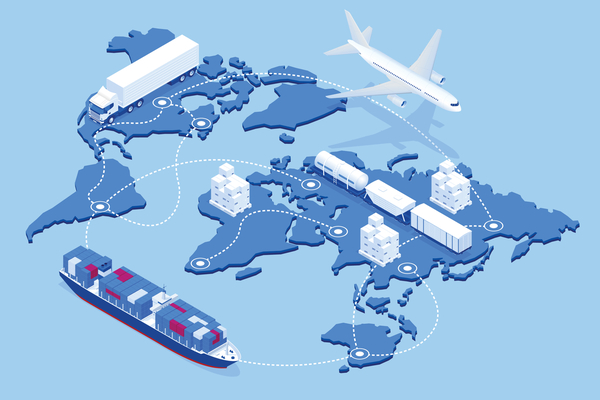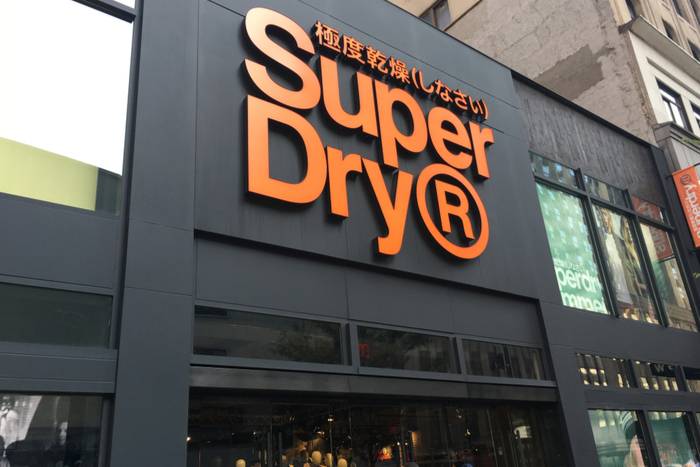To say the past few years have been challenging would be an understatement to say the least.
Consumers and retailers alike have lived through extremely volatile times – from a pandemic to subsequent supply chain issues and sky rocketing inflation, all topped off with the geopolitical crisis in Ukraine.
While some have fared better than others, “supply chain disruptions” have been called out across almost every fashion retail update over the past 24 months with M&S and Burberry among those lamenting the challenging conditions.
“Acute supply chain headwinds affected our ability to fully meet strong customer demand,” said Gap chief executive Sonia Syngal in a November trading update after cutting its outlook.
It has even pushed some retailers over the edge with both Sofa Workshop and Studio citing supply chain disruption as the reason why they plunged into administration.
Studio said not only were shipping costs higher, but delays meant it was left with late-arriving unsold stock after peak, which it needed to sell in 2022. In fashion, where clothes are seasonal, this can be – and in Studio’s case was – fatal.
“All of us have ordered more products to account for the longer time it takes to get here. That’s created a squeeze on capacity,”
Lord Wolfson, chief executive, Next
Russia’s ongoing invasion of Ukraine has now only added to complications, with surging oil prices having a knock-on effect on freight costs.
To prevent margins being obliterated, some retailers have decided they have no choice but to pass some of these cost rises onto the consumer.
Next has revealed it will raise prices by 8% in the second half of 2022, and boss Lord Wolfson says rising freight cost is the biggest factor pushing up prices.
He explains that retailers have exacerbated the supply chain crisis by ordering higher volumes of stock.
“As the world restocked over the last six months there’s been a squeeze on manufacturing capacity worldwide which has pushed prices up. All of us have ordered more products to account for the longer time it takes to get here. That’s created a squeeze on capacity,” he says.
Now more than ever fashion retailers and their supply chains must be equipped for an increasingly volatile trading environment. But is it possible for them to be crisis-proofed?
Accenture head of retail for the UK and Ireland Lynda Petherick explains that fashion retailers “have no choice but to harness technology” in order to create a more agile supply chain.
She says that AI and automation, such as predictive forecasting, are helping fashion retailers to better forecast trends in advance, estimating product longevity and popularity – ultimately result in fewer markdowns and waste.
Automation can also free up employees’ time and allow them to carry out business critical tasks, which can help protect retailers’ margins at a time when costs are on the rise.
At the end of last year, The Very Group revealed its partnership with the advanced automated technology company Knapp, allowing the retailer to fulfil customer orders in just 30 minutes at its East Midlands distribution centre, compared to four hours at it’s previous facility.
“More agility means faster responses to trends, less excess stock and more flexibility,” Petherick stresses.
“Careful planning is critical for managing demand, whilst allowing retailers to dynamically adjust and buffer their supply as needed.”
This will enable smaller and more regular sourcing batches and reduces order cancellations.
Dr Martens chief operating officer Geert Peeters agrees: “Our task is to build that whole supply chain in such a way that we can be agile and responsive to whatever happens and have the transparency, thanks to more tech.
“And obviously to diversify where possible, because we have learned that such things can happen.”
It is not just technology that can help ease the burden.
“Deep, sustainable, long-term relationships with suppliers who really care about your business are essential to help weather the storm.” Michael Thomson, founder, Pour Moi
Lingerie and swimwear retailer Pour Moi founder and chief executive Michael Thomson says that having a broader supply base across many countries can help combat volatility.
“You can’t put your eggs in one basket. Swimwear and lingerie companies face particular pressure on this front owing to the complexity of production, which means that there are fewer options for where you can actually manufacture your products,” Thomson says.
“Deep, sustainable, long-term relationships with suppliers who really care about your business are essential to help weather the storm.”
Online exacerbates the crisis

During the peak of the pandemic, the world saw ecommerce boom as consumers worldwide stayed home and online.
The BRC/KPMG Retail Sales Monitor revealed that close to half of non-food retail sales in the UK took place online during 2021.
While one would assume that retailers would welcome the surge in online orders, has the growth in ecommerce impacted supply chains?
Thomson says international online orders can be challenging “as there are fewer flights and also customs delays as the industry recovers from the pandemic,” he explains.
“Everyone is investing in their warehouses, focusing on efficiency, such as paper-free ordering and smart organisation when it comes to picking SKUs.
“This is a huge element of handling increased volume from ecommerce. There are some massive challenges on this front, including the cost of warehouses, returns and skyrocketing prices of shipping.”
Peeters says Dr Martens saw its online sales grow throughout Covid, much like many other brands and explains that with this growth, from a supply chain perspective, you need to be agile and responsive.
“It means we have to partner even closer with our last mile delivery suppliers and we are very pleased to say that we have managed to do that in a very good way, especially during the pandemic.” he explains.
Supply chain disruption is expected to continue for the rest of the year at least. Next’s Wolfson says: “In the best case scenario we’ll see an easing of pressure in the next 9 to 12 months.”
Will these headwinds limit fashion retailers ability to grow in the year ahead?
Pour Moi’s Thomson doesn’t believe that the total market size is going to grow any time soon.
“You can’t bury your head in the sand in terms of how that’s going to affect the industry, especially the “every day” category,” he says.
If retailers want to stay on top, their supply chains have to be set up to handle the increasing volatility of the world they’re trading in.
By doing this they’ll be putting themselves in the strongest position possible – ready for whatever the world might throw at them next.
Click here to sign up to Retail Gazette‘s free daily email newsletter


















